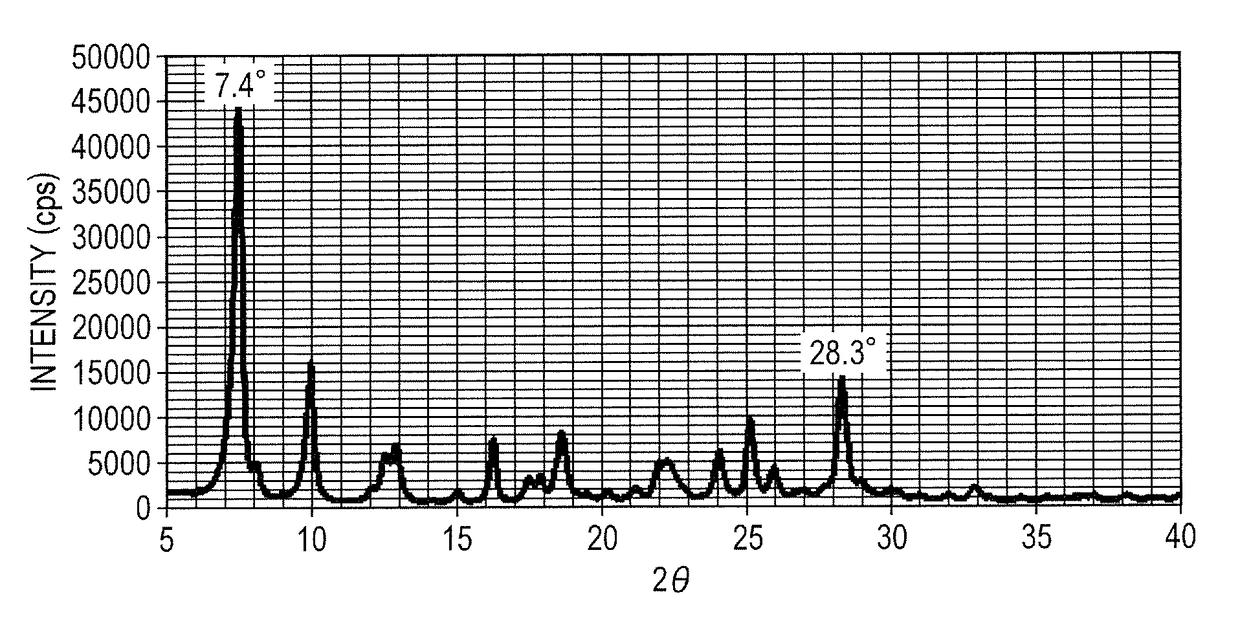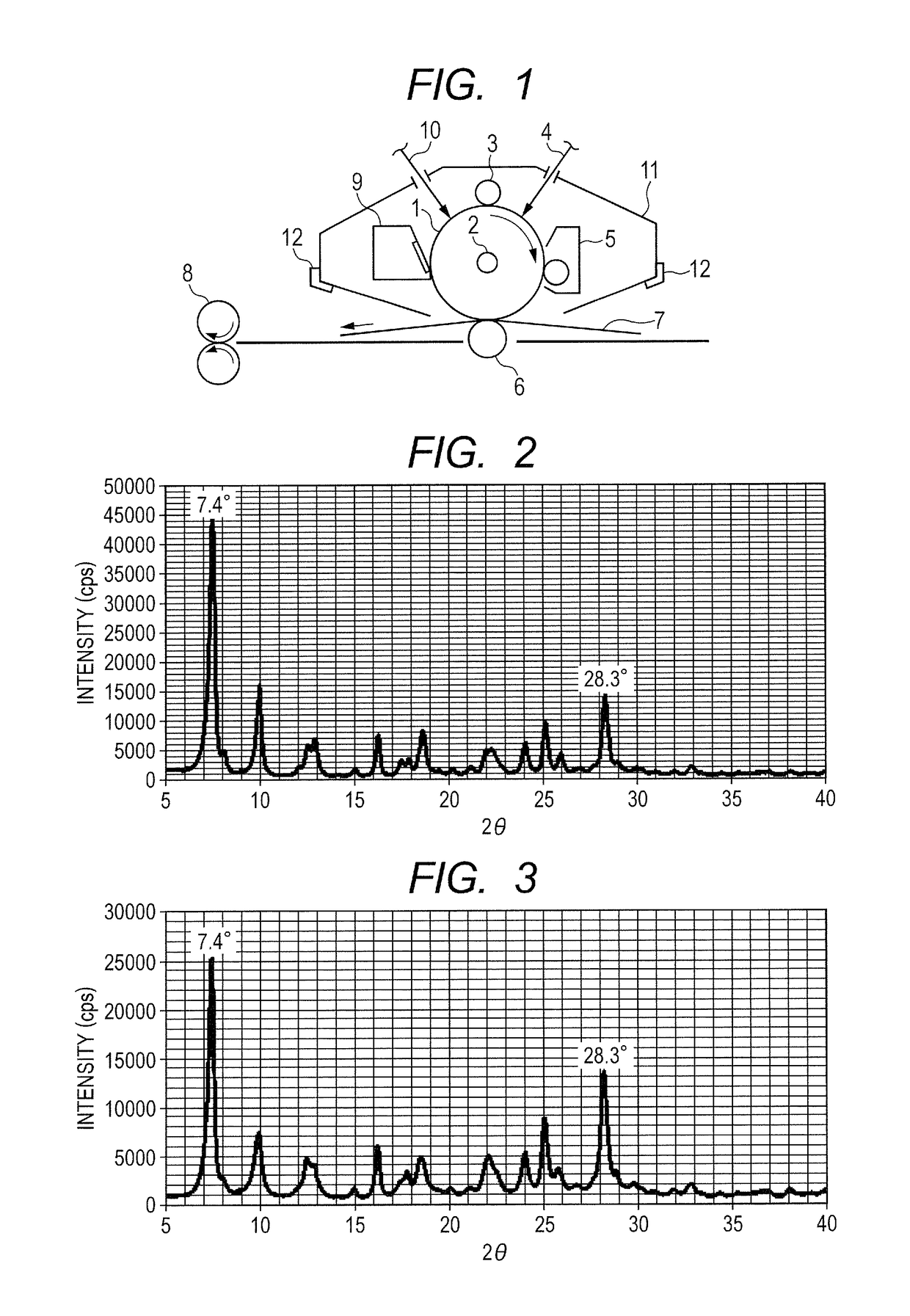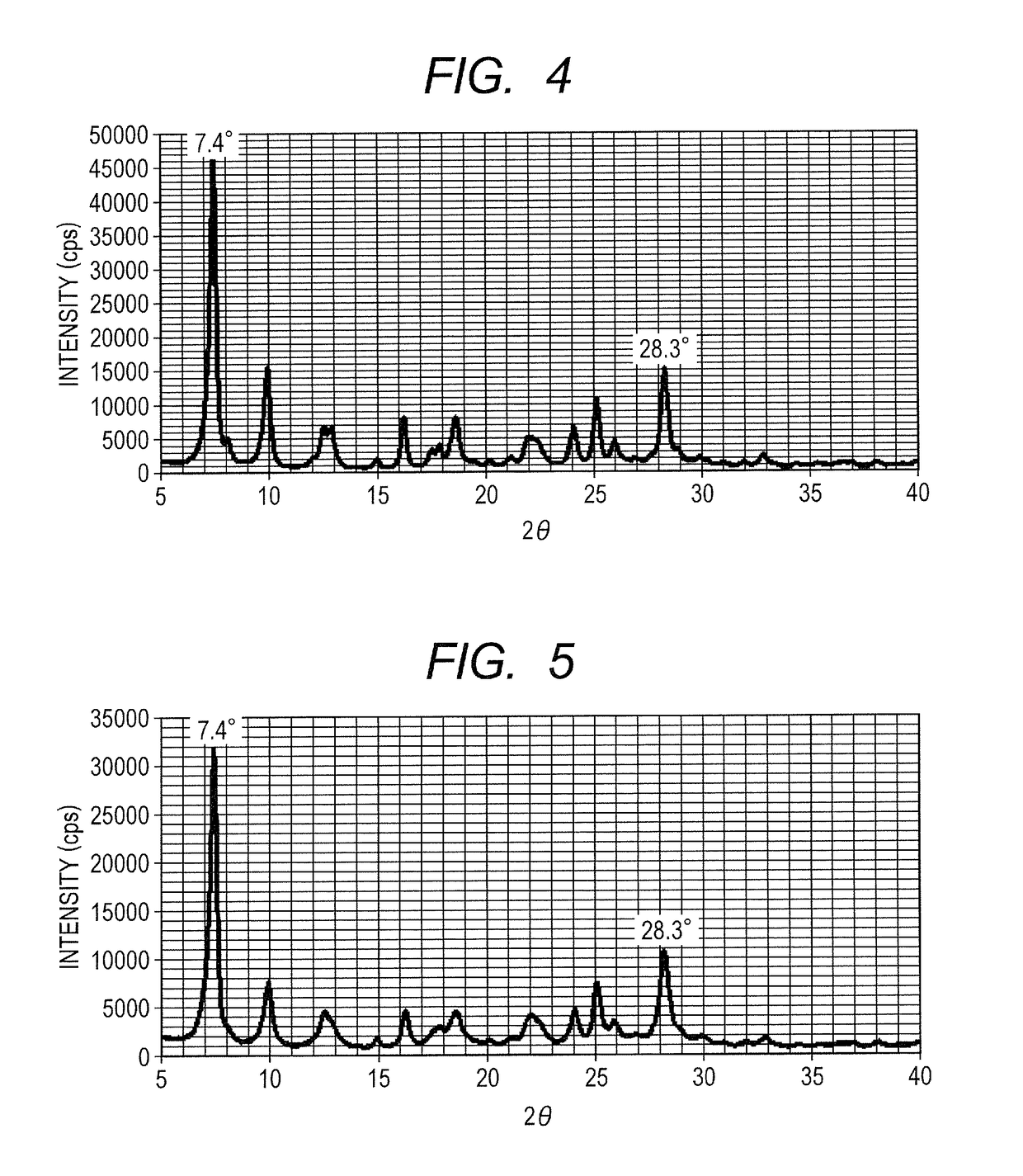Electrophotographic photosensitive member and manufacturing method thereof, process cartridge and electrophotographic apparatus, and phthalocyanine crystal and manufacturing method thereof
a manufacturing method and photosensitive technology, applied in the field of electrophotographic apparatus, process cartridge and electrophotographic apparatus, and phthalocyanine crystal and manufacturing method thereof, can solve the problem that the suppression of positive ghosting of 331107 is not sufficien
- Summary
- Abstract
- Description
- Claims
- Application Information
AI Technical Summary
Benefits of technology
Problems solved by technology
Method used
Image
Examples
example 1-1
[0117]Hydroxygallium phthalocyanine was manufactured as follows, in the same way as in Example 1-1 subsequent to the synthesis example 1 described in Japanese Patent Application Laid-Open No. 2011-94101. Under nitrogen flow atmosphere, 5.46 parts of phthalonitrile and 45 parts of α-chloronaphthalene were fed into a reaction tank, then heated up to a temperature of 30° C., and maintained at the temperature. Subsequently, 3.75 parts of gallium trichloride was fed thereto at the temperature (30° C.). At the feeding time, the mixture liquid had a water content of 150 ppm. The temperature was then increased to 200° C. Under the nitrogen flow atmosphere, a reaction was caused at a temperature of 200° C. for 4.5 hours, which was then cooled to a temperature of 150° C. for filtering a product. The produced residue was dispersed and cleaned with N,N-dimethylformamide at a temperature of 140° C. for 2 hours, and then filtrated. The produced residue was cleaned with methanol and dried to produ...
example 1-2
[0121]A hydroxygallium phthalocyanine crystal was obtained in the same way as in Example 1-1, except that the milling treatment time was changed to 200 hours. The powder X-ray diffraction spectrum of the produced crystal was similar to that in FIG. 2, and the crystal had peaks at Bragg angles 2θ±0.2° of 7.4° and 28.3° in CuKα characteristic X-ray diffraction. As a result of the same NMR measurement as in Example 1-1, the compound (1) with a content of 1.7% by mass in the crystal was confirmed. Using the produced hydroxygallium phthalocyanine crystal, the optical absorption spectrum was measured. The local maximal peak position in the wavelength range of 600 to 660 nm, and the local maximal peak position in the wavelength range of 800 to 900 nm that were found are described in Table 1.
example 1-3
[0122]A hydroxygallium phthalocyanine crystal was obtained in the same way as in Example 1-1, except that the milling treatment time was changed to 1000 hours. The powder X-ray diffraction spectrum of the produced crystal was similar to that in FIG. 2, and the crystal had peaks at Bragg angles 2θ±0.2° of 7.4° and 28.3° in CuKα characteristic X-ray diffraction. As a result of the same NMR measurement as in Example 1-1, the compound (1) with a content of 0.7% by mass in the crystal was confirmed. Using the produced hydroxygallium phthalocyanine crystal, the optical absorption spectrum was measured. The local maximal peak position in the wavelength range of 600 to 660 nm, and the local maximal peak position in the wavelength range of 800 to 900 nm that were found are described in Table 1.
PUM
| Property | Measurement | Unit |
|---|---|---|
| Bragg angles 2θ±0 | aaaaa | aaaaa |
| Bragg angles 2θ±0 | aaaaa | aaaaa |
| Bragg angles 2θ | aaaaa | aaaaa |
Abstract
Description
Claims
Application Information
 Login to View More
Login to View More - R&D
- Intellectual Property
- Life Sciences
- Materials
- Tech Scout
- Unparalleled Data Quality
- Higher Quality Content
- 60% Fewer Hallucinations
Browse by: Latest US Patents, China's latest patents, Technical Efficacy Thesaurus, Application Domain, Technology Topic, Popular Technical Reports.
© 2025 PatSnap. All rights reserved.Legal|Privacy policy|Modern Slavery Act Transparency Statement|Sitemap|About US| Contact US: help@patsnap.com



